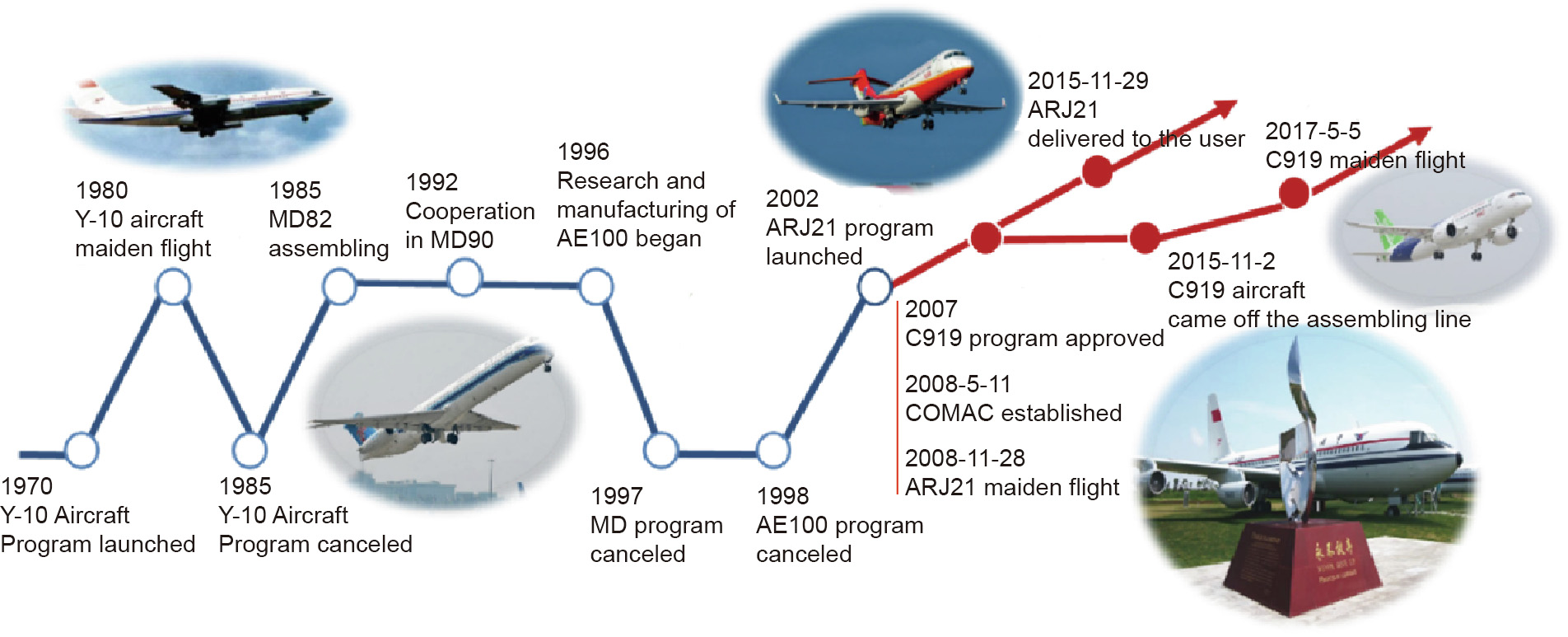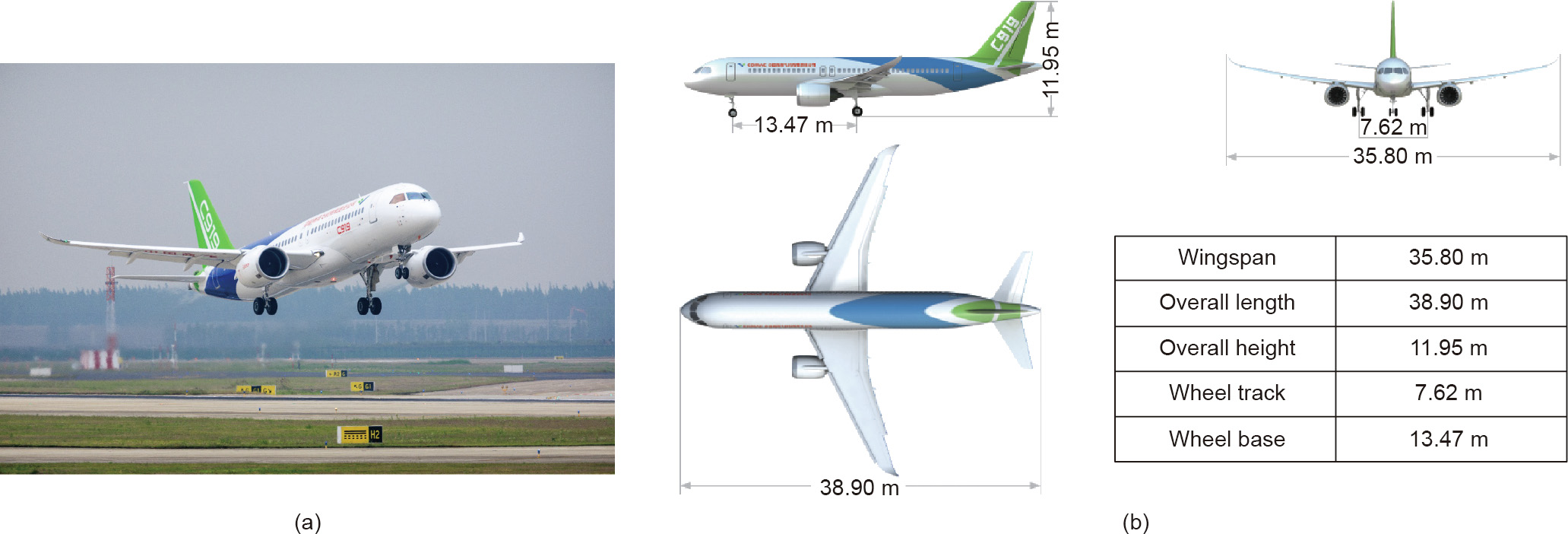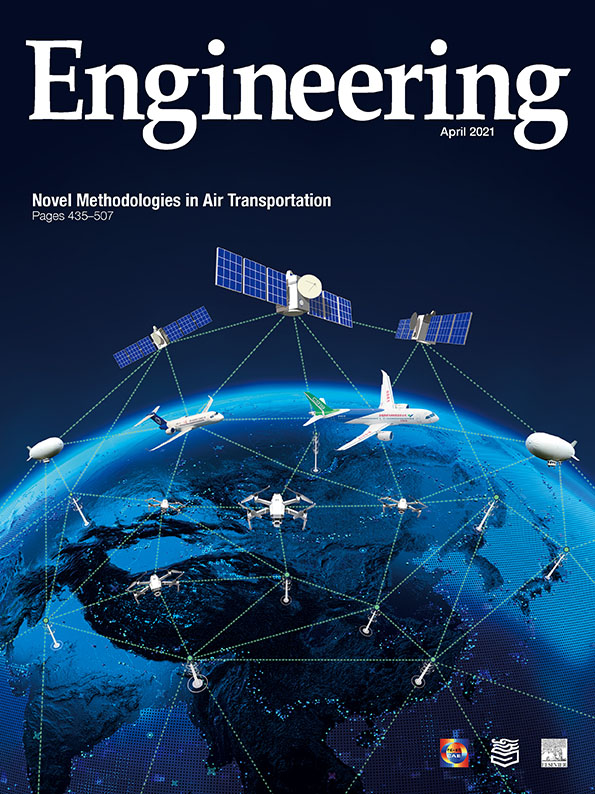《1. The development of large passenger aircraft holds great strategic significance》
1. The development of large passenger aircraft holds great strategic significance
The term ‘‘large passenger aircraft” refers to transport airplanes with more than 150 seats or over 100 t takeoff weight (also known as trunk liners). Among these, commercial airliners with 150–200 seats meet the aviation market’s requirements for short-haul routes and relatively low passenger capacity. As a result, large passenger aircraft are prevalent within airlines and are competitive in the aviation market. This kind of aircraft is also the entry level and basic type for the development of trunk liners.
As a national strategic high-tech industry, the aircraft manufacturing industry serves as a powerful engine for national economic growth and plays a vital role in promoting the development of science and technology. The development of large passenger aircraft is of great strategic importance.
In the next 20 years, the global economy will maintain a stable growth of 2.0% on average. The turnover of air transport will be 2.3 times greater than it is now, and the number of passenger aircraft worldwide is expected to double, rising to about 50 000. In China, the number of passenger aircraft will increase to over 10 000. Commercial aircraft are in great demand in both the domestic and international markets, and this powerful drive will bring about extensive opportunities for the development of large passenger aircraft. Moreover, the development of large passenger aircraft can satisfy people’s travel needs and contribute to economic and social development. Given this great potential, large passenger aircraft development will surely become a new turning point for economic growth.
Aircraft development and manufacturing is a business characterized by high risk, high investment, and a long cycle, making the entry barrier high. Only a limited number of large enterprises from very few countries around the world can enter into this industry. Large passenger aircraft are a representative of the high-end equipment manufacturing industry. The development of large passenger aircraft in China plays a significant role in improving independent innovation, enhancing core competitiveness, optimizing the economic growth model, promoting supplyside structural reform, and positioning China as one of the world leaders in the high-end manufacturing industry. The civil aviation industry features high output, long industrial chains, an extensive range of radiation, and a robust leading effect. The development of large passenger aircraft will significantly promote the development of the civil aviation industry. For one thing, aircraft development encourages breakthroughs in sectors such as new materials, modern manufacturing, advanced power systems, electronic information, automation, and computer technology; for another, it leads to significant progress in basic sciences, such as fluid mechanics, solid mechanics, numerical mathematics, thermal physics, chemistry, information science, and environmental science. Furthermore, the development of large passenger aircraft can promote innovation in the system and mechanisms of the aviation industry, integrate and make use of global resources, promote international cooperation, improve the manufacturing capacity and management level of the aviation industry, and also cultivate a team of aviation talents with international first-class level and promote the development of education.
《2. Chinese engineers have never stopped pursuing their dream of large passenger aircraft》
2. Chinese engineers have never stopped pursuing their dream of large passenger aircraft
The manufacturing of large passenger aircraft in China began over 60 years ago. However, this endeavor was suspended in the 1980s. With several large passenger jet programs launched and then canceled, no program survived the entire development cycle, and all ended with no definite progress made. Fig. 1 outlines the development of commercial aircraft in China from 1970 to today.
《Fig. 1》

Fig. 1. Development history of commercial aircraft in China. Credit: public domain. MD: McDonnell Douglas; COMAC: Commercial Aircraft Corporation of China, Ltd.
In August 1970, the Y-10 Aircraft Program began. The Y-10 aircraft took its maiden flight in 1980, after 10 years’ endeavor. Unfortunately, the Y-10 Aircraft Program was canceled in 1985 for various reasons. The Y-10 aircraft underwent a total of 164 flight hours and 120 takeoffs and landings, flew to major cities in China, and transported cargo to Tibet, China seven times, thus achieving a miracle under the economic conditions and technological level at that time in China. In 1985, China started a cooperation with the McDonnell Douglas Corporation to manufacture McDonnell aircraft; in 1996, China began to work with Airbus on the development and manufacturing of ‘‘Asia Express” (AE100) aircraft. However, all these efforts ended in vain. Again and again, Chinese engineers have ignited their ambition to produce large passenger aircraft, and have failed time and time again. However, Chinese engineers have never given up and have continued to hold fast to the goal of developing our own large passenger aircraft. In 2008, the Commercial Aircraft Corporation of China, Ltd. (COMAC) was established, officially marking the launch of a large passenger aircraft program in China. This initiative indicated that the Chinese commercial aircraft industry stood at a new historical starting point and was entering into a new development phase.
《3. A trio of commercial aircraft developments in China》
3. A trio of commercial aircraft developments in China
COMAC’s development trio includes regional aircraft, narrowbody trunk aircraft, and wide-body trunk aircraft. By building a complete research and development (R&D) system and product portfolio, COMAC is exploring the development of a unique roadmap for commercial aircraft.
《3.1. The ARJ21: advanced regional jet for 21st century》
3.1. The ARJ21: advanced regional jet for 21st century
The ARJ21 aircraft (Fig. 2) is a new turbofan regional aircraft independently developed by China, whose independent intellectual property rights are owned by China. It has a layout of 78–90 seats and a range of 2225–3700 km.
《Fig. 2》

Fig. 2. The ARJ21 new regional aircraft: (a) on the tarmac and (b) external dimension. ARJ21 data was obtained from COMAC. Credit: public domain.
With the development and manufacturing of ARJ21 regional aircraft, China can systematically and integrally establish its airworthiness design and verification system of civil aircraft for the first time. Furthermore, this advance enables China to solve the technical problems of assessing safety in inter-system connection and to overcome the technical difficulties in verifying unique risks such as dual engine failure, tire blowout, bird strike, and engine rotor bursting. Moreover, China is now able to make breakthroughs in analysis and testing technology under very complicated weather conditions such as freezing, contaminated runways, strong crosswinds, and extreme temperatures, and to master several key flight verification technologies such as high horizontal tail stall, minimum unstick speed, landing gear shimmy, flight control fault simulation, and performance reliability. For the first time, China has journeyed through the entire development cycle of a regional jet, including design, manufacturing, development testing, flight testing, delivery, batch production, and customer service. This accomplishment allowed us to accumulate extensive experience in the management of a significant innovation project; to explore for the first time a technology route for domestically made commercial aircraft, in line with the principle of ‘‘independent development, international cooperation, and international standard”; and to establish a preliminary commercial aircraft industry system, technological innovation system, and project management system in the new era.
By the end of 2020, 46 ARJ21 regional aircrafts have been delivered to customers, 121 air routes have been connected, 68 cities have been linked to air routes, and over 1 620 000 passengers have been safely transported to their destinations.
《3.2. The C919: large passenger aircraft》
3.2. The C919: large passenger aircraft
Adhering to the philosophies of ‘‘safer, more economic, more comfortable, and more environmentally friendly” and ‘‘reduction of weight, resistance, and emission,” the C919 large passenger aircraft (Fig. 3) is designed to have a layout of 158–168 seats and a range of 4075–5555 km. The first C919 aircraft took its maiden flight on 5 May 2017.
《Fig. 3》

Fig. 3. The C919 large passenger aircraft: (a) taking off and (b) external dimension. The C919 data was obtained from COMAC. Credit: public domain.
With the C919 large passenger aircraft, COMAC has embarked on the path of top–down design for commercial aircraft development and manufacturing with independent intellectual property rights in engineering technology. The use of a distributed collaboration mechanism and model-based definition (MBD) makes it possible to conduct product design and manufacturing in a highly synchronized and collaborative way, while employing paperless digital manufacturing technology. The C919 aircraft features a low-resistance streamlined nose, a load-support windshield, supercritical wings, and an advanced aerodynamic configuration. New materials such as third-generation aluminum–lithium alloys, high-modulus carbon fiber composite materials, and titanium alloys are widely used on the C919 aircraft. Full fly-by-wire, integrated modular avionics, and other systems are integrated on the C919 aircraft. The use of a propulsion system developed through state-of-the-art technology has prompted a new round of development of narrow-body aircraft. All the new technologies mentioned above improve the performance of the C919 large passenger aircraft in four aspects: safety, economy, comfort, and environmental friendliness. This achievement dramatically propels the development of aeronautical engineering technology forward, both in China and across the globe.
A total of 815 orders from 28 customers, both at home and abroad, have been received for the C919 large passenger aircraft, with China Eastern Airlines as the launch customer. At present, all six C919 testing aircraft have been put into flight testing in Shanghai, Xi’an, Dongying, and Nanchang. The parts and components for the first C919 aircraft were manufactured in Shanghai, Xi’an, Nanchang, Chengdu, and so forth. The aircraft’s airworthiness certification, technological research, and batch production are proceeding in a smooth and orderly manner.
《3.3. The CR929: long-range wide-body aircraft》
3.3. The CR929: long-range wide-body aircraft
The CR929 long-range wide-body passenger aircraft (Fig. 4) is being jointly developed by COMAC and the United Aircraft Corporation (UAC), Russia. With a range of 12 000 km and 280 seats, the baseline type is a standard three-cabin aircraft. The developers of the CR929 aircraft consider China and Russia to be their key target markets and the Asia–Pacific region as an essential market. The CR929 caters to other overseas markets as well, in order to gradually meet the demands of the global air transport market. Wide-body passenger aircraft are an integral part of modern commercial aircraft development, and play a vital role in promoting technological innovation, systems innovation, and talent training for the future development of the commercial aircraft industry.
《Fig. 4》

Fig. 4. The CR929 long-range wide-body passenger aircraft. Credit: public domain.
The design of general technology scheme for the CR929 longrange wide-body passenger aircraft has been completed, and the project is now shifting to the preliminary design stage.
After more than 10 years’ exploration and practice, COMAC has undergone the entire development and manufacturing process of passenger jetliners. In doing so, it has effectively mastered the law, methods, and technologies of this process; preliminarily established a product family from regional aircraft to short- and medium-range wide-body passenger aircraft; set up an initial management system for talents and technologies for long-term development; and driven the development of relevant basic sciences, the aviation industry, and other related sectors. COMAC has realized a historical leap in commercial aircraft development in China: Starting from almost no basis, it has embarked on a new journey to lead China’s civil aircraft industry from a position of weakness to one of strength.













 京公网安备 11010502051620号
京公网安备 11010502051620号




